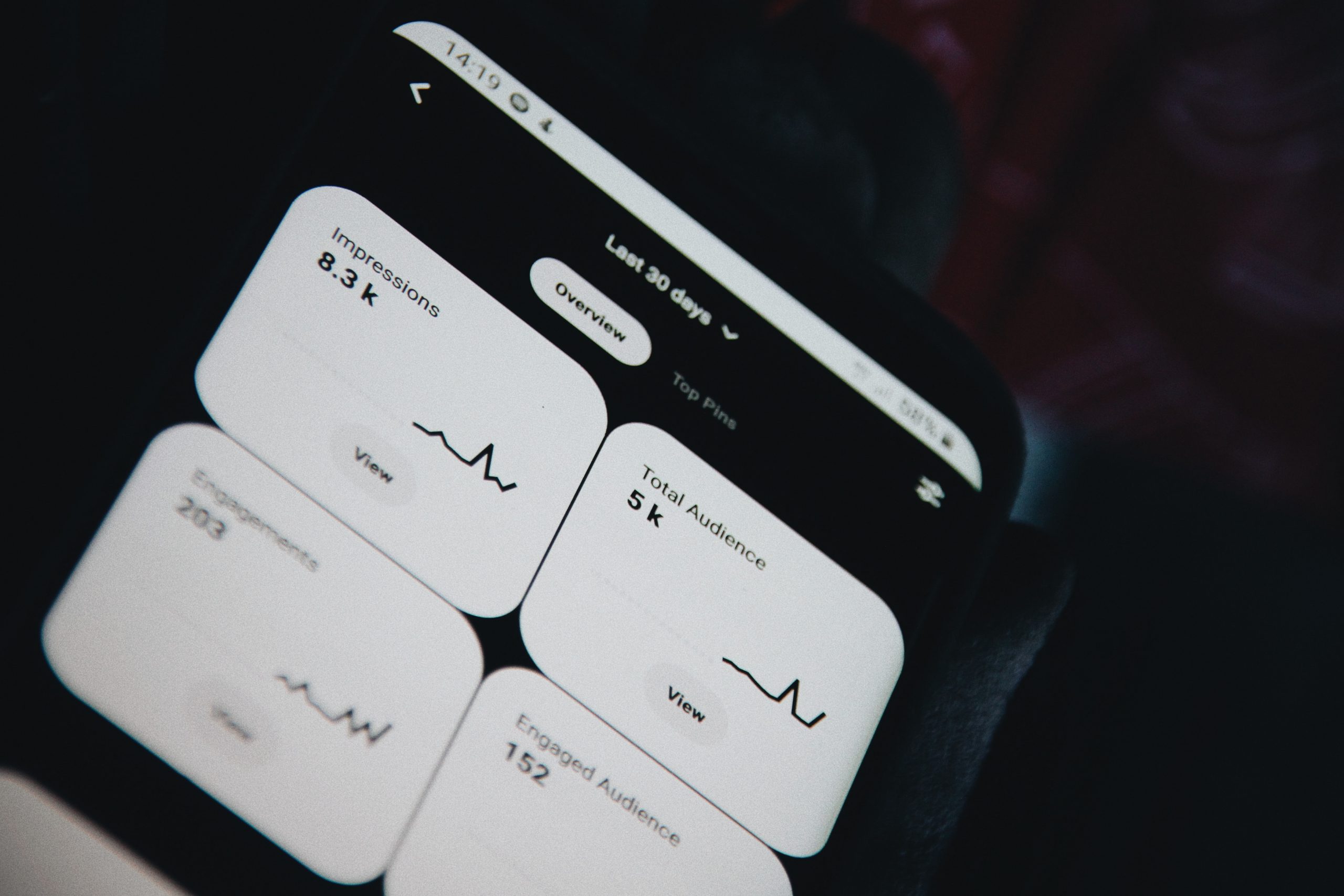We at WeSoftYou are frequently asked about the cost of building a travel app in London, UK. As a software development company with a proven track record, we understand the importance of providing accurate information to our clients. In this article, we will dive deep into the key factors that contribute to the cost of travel app development and provide insights into the process involved. So, let’s start by understanding the basics of travel mobile app development.
Understanding the Basics of Travel Mobile App Development
Traveling has become an integral part of our lives, and with the advent of technology, planning and managing trips has become much more convenient. One of the key tools that have revolutionized the way we travel is the mobile app. A travel app is a mobile application designed to facilitate the overall travel experience for users. It offers a wide range of functionalities, from flight bookings and hotel reservations to itinerary planning and exploring local attractions. The goal is to provide a seamless and convenient way for travelers to plan, book, and manage their trips on the go.
What is a Travel App?
A travel app is not just a simple tool for booking flights and hotels. It goes beyond that. It is a comprehensive platform that brings together various aspects of travel into one place. With a mobile app, users can not only book their flights and accommodations but also plan their itineraries, discover local attractions, and get real-time travel alerts and updates. It is like having a personal travel assistant in your pocket, guiding you through every step of your journey.
Key Features of a Successful Travel App
When developing a travel app, it’s essential to include features that meet the needs of users. Here are some key features to consider:
- Flight and hotel search and booking capabilities: The ability to search for and book flights and hotels directly within the app is crucial for a travel app. Users should be able to compare prices, view availability, and make secure bookings with ease.
- Real-time travel alerts and updates: Keeping users informed about any changes or disruptions in their travel plans is essential. A successful mobile app should provide real-time notifications about flight delays, gate changes, and other important updates.
- Itinerary planning and organization: An app should allow users to plan and organize their itineraries effortlessly. Users should be able to add activities, attractions, and restaurants to their itinerary, set reminders, and easily access all the relevant information.
- Local guides and recommendations: Providing users with local guides and recommendations is a great way to enhance their travel experience. A travel app should offer insights into the best places to visit, eat, and explore at their destination, based on user preferences and reviews.
- Offline functionality: Access to information is crucial, even when there is no internet connection available. A successful mobile app should have offline functionality, allowing users to access their itineraries, maps, and other important details without the need for an internet connection.
- Social integration: Traveling is often a social experience, and a travel app should enable users to share their travel experiences with friends and family. Integrating social media platforms within the app allows users to post updates, photos, and recommendations, creating a sense of community among travelers.
Now that we understand the basics and key features of travel app development, let’s delve into the cost factors involved in creating a successful travel app.
Factors Influencing Travel App Development Cost
In today’s digital age, mobile apps have become an essential tool for globetrotters and adventure enthusiasts. These apps provide a convenient and user-friendly platform for planning trips, booking accommodations, discovering local attractions, and much more. However, the development of a travel app involves various cost factors that need to be considered. Let’s dive deeper into some of the key factors that influence the cost of app development.
Design and User Interface
When it comes to travel apps, first impressions matter. The design and user interface of a mobile app play a crucial role in its success. A well-designed app with a user-friendly interface enhances the overall user experience, making it more enjoyable and intuitive for users to navigate through the app’s features and functionalities. However, creating a visually appealing and easy-to-use design requires time and expertise. The cost of design and UI development depends on the complexity of the app, the number of screens, and the level of customization required. Designers need to carefully consider color schemes, typography, iconography, and other visual elements to create a unique and engaging app design.
Additionally, user interface development involves implementing interactive elements such as buttons, sliders, and animations to enhance the user experience. These elements require coding and testing to ensure they function smoothly across different devices and operating systems. The complexity of the user interface can impact the development cost, as more intricate designs and animations may require additional time and resources.
App Functionality and Features
Travel apps come in various shapes and sizes, catering to different types of travelers and their specific needs. The functionality and features of a travel app can vary greatly based on the requirements of the client. Some common features include flight and hotel bookings, itinerary planning, real-time location tracking, weather updates, and local recommendations. However, the more features and functionalities required, the higher the development cost. It’s important to carefully prioritize the features to ensure a balance between desired functionalities and cost. Conducting thorough market research and user surveys can help identify the most essential features that will provide the most value to users.
Developing complex features such as payment gateways, multi-language support, and social media integrations can also add to the overall cost. These features require additional development time and may involve integration with third-party APIs or services. It’s important to consider the long-term scalability of the app and plan for future feature enhancements to avoid costly reworks in the future.
Backend Development
While the design and user interface are the visible aspects of an app, the backend development is the backbone that powers its functionality. The backend development involves creating and managing the server-side architecture, databases, APIs, and other infrastructure components. The complexity of the backend development can significantly impact the development cost.
Factors such as user management, location-based services, third-party integrations, and scalability requirements can add to the complexity and cost of backend development. User management involves implementing secure authentication and authorization systems, allowing users to create accounts, log in, and manage their personal information. Location-based services enable features like real-time navigation, nearby attractions, and personalized recommendations based on the user’s location. Integrating third-party APIs, such as payment gateways or social media platforms, requires additional development effort and may involve additional costs.
Scalability is another crucial aspect of backend development. As the user base grows, the app needs to handle increased traffic and data processing without compromising performance. Building a scalable backend architecture from the start can help minimize future development costs and ensure a seamless user experience as the app grows in popularity.
App Maintenance and Updates
Once the travel app is launched, it requires ongoing maintenance and updates to ensure its smooth operation and compatibility with new devices and operating systems. App maintenance includes bug fixes, security updates, performance optimization, and feature enhancements. It’s important to allocate a portion of the overall budget for post-launch maintenance and updates.
Bug fixes are inevitable in any software development project, and travel apps are no exception. Regular testing and quality assurance processes help identify and resolve any issues that may arise after the app’s release. Security updates are crucial to protect user data and prevent unauthorized access. Performance optimization ensures that the app runs smoothly and efficiently, providing a seamless user experience. Feature enhancements may be necessary to keep up with evolving user needs and market trends. These updates may involve adding new features, improving existing functionalities, or integrating with new APIs or services.
By considering the cost factors mentioned above, mobile app developers can create a realistic budget and timeline for their projects. It’s important to collaborate closely with clients to understand their specific requirements and goals, ensuring that the final product meets their expectations while staying within the allocated budget.
| Cost Component | Estimated Cost Range |
|---|---|
| Development | £50,000 – £200,000 |
| Design | £10,000 – £50,000 |
| User Interface (UI) Design | £10,000 – £50,000 |
| User Experience (UX) Design | £10,000 – £50,000 |
| Search and Booking Functionality | £20,000 – £100,000 |
| Integration with Travel APIs | £10,000 – £50,000 |
| Map and Navigation Features | £10,000 – £50,000 |
| User Reviews and Ratings | £5,000 – £30,000 |
| Trip Planning and Itinerary | £10,000 – £50,000 |
| Payment Integration | £10,000 – £50,000 |
| Testing | £5,000 – £30,000 |
| Deployment | £2,000 – £10,000 |
| Maintenance and Support | £20,000 – £100,000 |
4 Steps to Create a Mobile App
1. Initial Consultation and Planning
The first step in mobile app development is to have an initial consultation with the development company, like Wesoftyou, to discuss the project requirements and goals. This helps in understanding the client’s vision and providing valuable insights to shape the app’s features and functionalities. During the consultation, the development team may ask questions to gain a deeper understanding of the target audience, the purpose of the app, and any specific requirements the client may have. This collaborative process ensures that the app development process is tailored to meet the client’s needs.
Once the initial consultation is complete, the planning phase begins. This involves creating a roadmap for the development process, outlining the steps that need to be taken, and setting realistic timelines and milestones. The development company will also estimate the cost involved in developing the app. This phase is crucial as it sets the foundation for the entire project and ensures that everyone involved is on the same page.
2. Designing the User Interface
Once the planning is done, the next step is to design the user interface (UI) of the app. This process includes creating wireframes, mockups, and prototypes to visualize the app’s layout and navigation. The UI design should align with the brand identity and provide an intuitive and engaging user experience. The design team will work closely with the client to ensure that the app’s interface reflects their brand and meets their expectations.
During the UI design phase, attention is given to the placement of elements, color schemes, typography, and overall aesthetics. The goal is to create a visually appealing and user-friendly interface that enhances the user’s experience. The design team will also consider the latest design trends and best practices to ensure that the app remains modern and competitive in the market.
3. Coding and Development
After the UI design is finalized, the development team starts coding and implementing the app’s features and functionalities. This involves frontend development, backend development, and integration of third-party APIs. The frontend development focuses on creating the visual elements of the app that users interact with, such as buttons, forms, and menus. The backend development involves building the server-side logic and database management to support the app’s functionality.
During the coding and development phase, the development team follows industry-standard coding practices and uses the latest technologies and frameworks to ensure that the app is robust, scalable, and secure. They also conduct regular code reviews and testing to identify and fix any issues or bugs that may arise during the development process.
4. Testing and Launch
Testing is a crucial phase in mobile app development to ensure that the app performs as expected and is free from bugs and glitches. This includes functional testing, performance testing, and user acceptance testing. Functional testing involves testing each feature of the app to ensure that it works as intended. Performance testing evaluates the app’s speed, responsiveness, and stability under different conditions. User acceptance testing involves getting feedback from real users to ensure that the app meets their expectations and provides a seamless experience.
Once the app is thoroughly tested and meets quality standards, it can be launched on the app stores for users to download and use. The launch phase involves creating app store listings, optimizing the app’s visibility, and marketing the app to attract users. The development company may also provide post-launch support to address any issues that may arise and to continuously improve the app based on user feedback.
Case Study: Successful Mobile Travel Apps Developed in the UK
Skyscanner
Skyscanner is a popular travel app developed in the UK that allows users to search and compare flight prices, hotel rates, and car rentals. It provides a seamless booking experience and real-time updates on travel deals and offers. The success of Skyscanner is a testament to the potential of travel app development.
Skyscanner was founded in 2003 by three technology enthusiasts who saw the need for a comprehensive mobile app that would simplify the process of finding the best travel deals. They wanted to create a platform that would enable users to compare prices across multiple airlines, hotels, and car rental companies, all in one place.
The app gained popularity quickly, and by 2007, it had expanded its services to cover more than 30 countries. Skyscanner’s success can be attributed to its user-friendly interface, which allows users to easily search for flights, hotels, and car rentals based on their preferences and budget.
One of the key features that sets Skyscanner apart from its competitors is its real-time updates on travel deals and offers. The app constantly monitors prices and sends notifications to users when there are significant changes or discounts available. This ensures that users are always getting the best possible deals.
Skyscanner’s success has not gone unnoticed in the travel industry. In 2016, the app was acquired by Ctrip, China’s largest online travel agency, for $1.74 billion. This acquisition further solidified Skyscanner’s position as a leader in the travel app market.
Citymapper
Citymapper is another successful travel app that originated in the UK. It focuses on helping users navigate public transportation systems in various cities worldwide. Citymapper provides real-time information on bus, train, and subway schedules, as well as alternative routes and transportation options. The app’s success lies in its simplicity and accuracy.
Citymapper was launched in 2011 by a group of entrepreneurs who were frustrated with the lack of reliable and user-friendly public transportation apps. They wanted to create an app that would provide accurate and up-to-date information on public transportation options, as well as help users navigate unfamiliar cities with ease.
The app quickly gained popularity among urban dwellers and travelers alike. Its intuitive interface and accurate real-time information set it apart from other transportation apps. Citymapper uses data from various transportation authorities and combines it with user-generated data to provide the most accurate and reliable information possible.
In addition to providing real-time transportation information, Citymapper also offers features such as step-by-step directions, estimated travel times, and fare comparisons. These features make it easier for users to plan their journeys and make informed decisions about the best routes and modes of transportation to take.
Citymapper’s success has led to its expansion into multiple cities worldwide. The app is now available in over 40 cities, including London, New York, Paris, and Tokyo. Its continued growth and success demonstrate the demand for reliable and user-friendly transportation apps in today’s fast-paced world.
Hiring a Travel Mobile App Development Company in London
When it comes to developing a travel app, choosing the right development company is crucial. London, being a hub of technological advancements, offers a wide range of options for businesses looking to hire a travel app development company. However, before making a decision, there are several factors that need to be considered to ensure a successful partnership.
Factors to Consider When Choosing a Development Company
Experience is one of the key factors to consider when selecting a development company for your travel app. It is important to choose a company that has a proven track record in app development, with a focus on travel apps specifically. This ensures that they have the necessary expertise and knowledge to handle the unique challenges that come with developing a travel app.
Another important factor to consider is the company’s portfolio of previous work. By reviewing their past projects, you can get a sense of their design capabilities, user experience expertise, and overall quality of their work. This will help you determine if their style aligns with your vision for the travel app.
Client testimonials and reviews are also valuable in assessing the credibility and reliability of a development company. Reading about the experiences of other clients can give you insights into their professionalism, communication skills, and ability to deliver projects on time.
Furthermore, the ability of the development company to understand and fulfill your unique requirements is crucial. Travel apps often have specific features and functionalities that are essential for their success. Therefore, it is important to choose a company that not only understands your requirements but also offers innovative solutions to enhance the user experience and make an app stand out in the competitive travel industry.
Estimated Costs for Hiring a Development Company
When it comes to budgeting for travel app development in London, there are several factors that can influence the costs involved. The complexity of the app is a major factor, as more complex features and functionalities require additional time and resources to develop.
Additionally, the number of platforms the app needs to be developed for can impact the costs. Developing for multiple platforms, such as iOS, Android, and web, requires additional development and testing efforts, which can increase the overall cost of the project.
The level of customization required is another factor that can affect the costs. If your app requires extensive customization to meet your unique business needs, it may require more development hours and resources, resulting in higher costs.
Finally, the pricing structure of the development company can also influence the estimated costs. Some companies may charge a fixed price for the entire project, while others may offer hourly rates. It is important to discuss the pricing structure with the development company upfront to ensure transparency and avoid any surprises.
If you are considering hiring a travel app development company in London, UK, Wesoftyou is a reputable option to explore. They offer a free consultation to understand your project requirements and provide you with a detailed and accurate cost estimation. With their expertise in travel app development and commitment to client satisfaction, Wesoftyou can help bring your travel app idea to life.
How to Develop a Travel App on Your Own?
Pros and Cons of DIY App Development
Developing a travel app yourself offers certain advantages, such as complete control over the development process and potential cost savings. However, it also comes with challenges and limitations, especially if you lack the necessary technical expertise. DIY app development requires a significant investment of time and learning resources, and there is a higher risk of making mistakes that can hinder the app’s success.
Cost Comparison: Hiring a Company vs. DIY
While DIY app development may seem cost-effective at first, it’s essential to consider the long-term implications. Hiring a professional development company like Wesoftyou ensures a high-quality app with a seamless user experience. Additionally, the time and effort saved by outsourcing the development process can be utilized for other business activities.
Final Words
The travel mobile app development in London, UK can be a valuable investment for businesses in the travel industry. With the growing popularity of mobile technology and the increasing demand for seamless travel experiences, a well-designed and user-friendly app can help businesses attract and retain customers. The overall cost of app development in London depends on various factors, but it is important to consider the long-term benefits and potential return on investment.
Read how much does it cost to make an app, UK — Streaming App in London.
FAQ
The development timeline for a travel app depends on many factors, including its complexity and the development company’s capacity. On average, it can take several months to a year to develop a fully functional travel app.
Yes, you can add new features to your travel app even after it is launched. App updates and feature enhancements are part of the maintenance process and can be implemented based on user feedback and business requirements.
There are several monetization strategies for apps, including in-app purchases, advertising, subscriptions, and partnerships with hotels and travel agencies. The right approach depends on your app’s target audience and business goals.





















